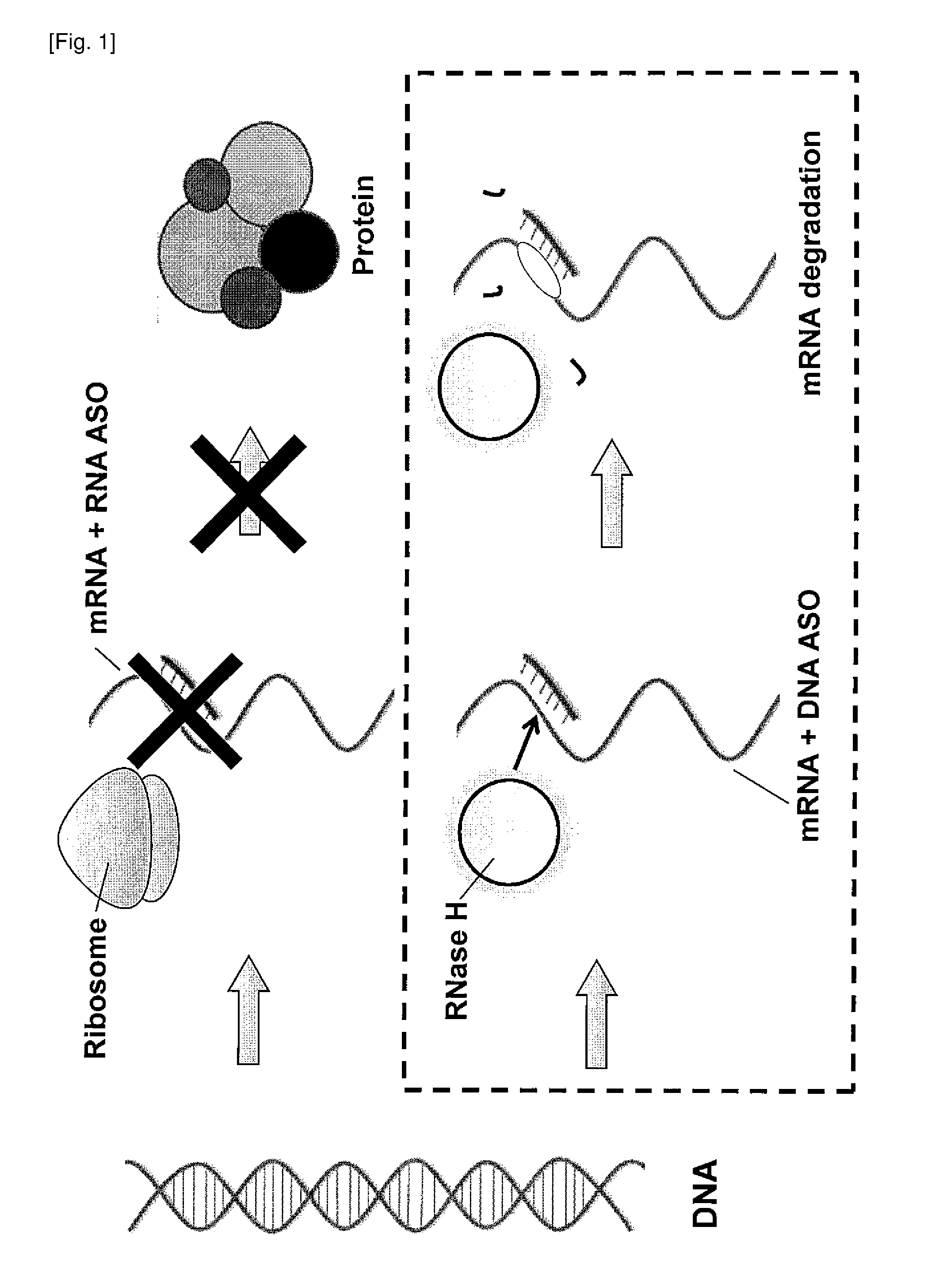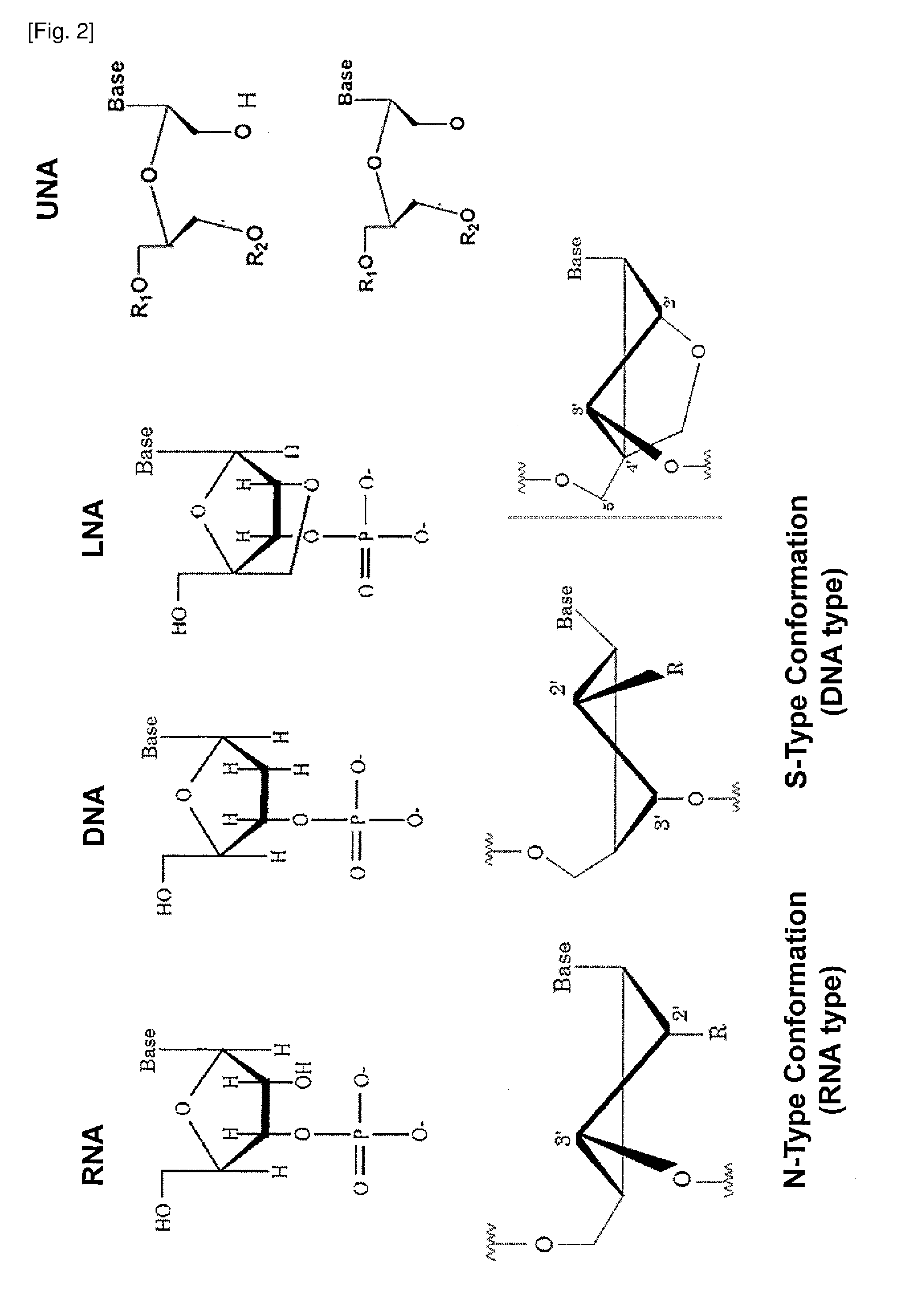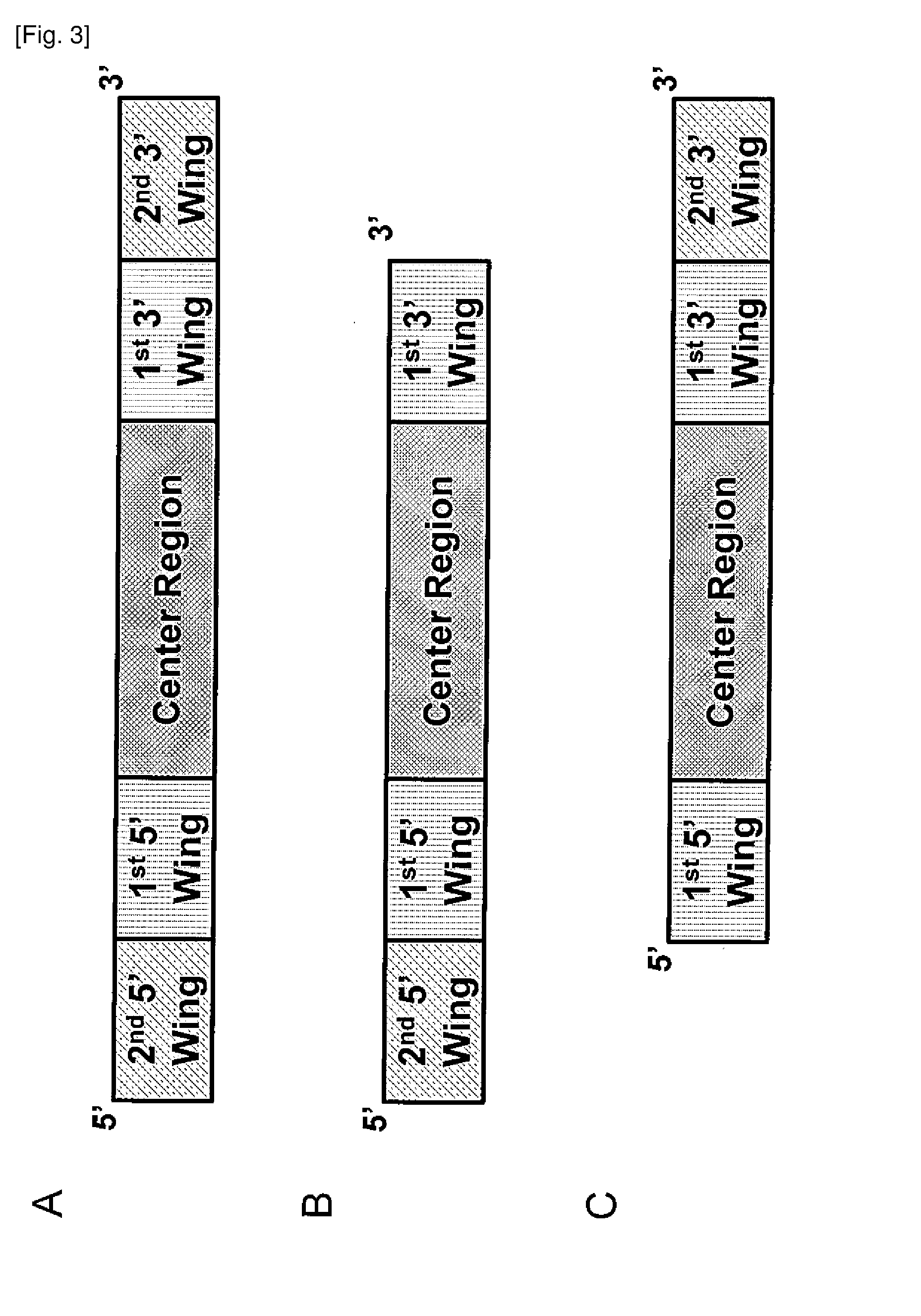Chimeric single-stranded antisense polynucleotides and double-stranded antisense agent
a technology of antisense and polynucleotide, which is applied in the field of chimeric single-stranded polynucleotide and double-stranded antisense agents, can solve the problems of low potency, safety, and/or efficacy of antisense oligonucleotides using even these high-performance modified nucleic acids, and achieves high specificity, high efficiency, and high specificity.
- Summary
- Abstract
- Description
- Claims
- Application Information
AI Technical Summary
Benefits of technology
Problems solved by technology
Method used
Image
Examples
example 1
[0148]An experiment comparing the inhibition potency of a chimeric polynucleotide according to one embodiment of the invention with two conventional gapmer antisense oligonucleotide was conducted. The polynucleotide structures and the results of the experiment are shown in FIG. 7. The control gapmers are 13 bases (ApoB1 ASO 13mer; SEQ ID NO:6) and 20 bases (ApoB1 ASO 20mer-4; SEQ ID NO:2) in length. The 13mer control has a central region of 8 phosphorothioated DNA nucleotides, a first 5′-wing region of 2 LNA bases and a first 3′-wing region of 3 LNA bases, but does not have a second wing on either side. The 20mer control has the same structure as the 13mer, and adds 4 phosphorothioated 2′-O-Me RNA bases at the 5′ end and 3 phosphorothioated 2′-O-Me RNA bases at the 3′ end. According to the disclosure, these bases are not low protein-affinity nucleotides (because they are phosphorothioated) and thus they do not constitute a second 5′ or 3′-wing region. They would actually be classifi...
example 2
[0154]An experiment comparing the inhibition potency of a chimeric polynucleotide according to embodiments of the invention having either a second 5′-wing region, a second 3′-wing region, or both wing regions was conducted. The polynucleotide structures and the results of the experiment are shown in FIG. 8A. Two conventional gapmer controls were compared with the inhibition potency of 3 different chimeric polynucleotides.
[0155]The ASO's were tested in vivo using Hep 1-6 liver cells according to the procedure described in Example 1, and the results are shown in FIG. 8B. The ASOs were transfected at a concentration of 20 nM.
[0156]As shown by the results in FIG. 8B, all five ASOs show an antisense effect relative to the negative control (no ASO). However, comparing the inhibition potency of the 20mer chimeric polynucleotides with the 20mer control, the chimeric polynucleotide provides a greater degree of inhibition in all three cases. Significantly, the chimeric polynucleotide with a s...
example 3
[0157]Next, the chimeric polynucleotides were tested in vivo in mice. The sequences and design of the ASO probes and controls are shown in FIG. 9. The ASO were intravenously injected to a mouse in an amount of 3.0 mg / kg each through the tail vein. The mice were 4-week old female ICR mice with body weights of 20 to 25 g. The experiments using mice were all carried out with n=3. Also, as a negative control group, mice to which only PBS was injected instead of the single-stranded ASO or double-stranded nucleic acid complex were also prepared. Seventy-two hours after the injection, the mice were perfused with PBS, and then the mice were dissected to extract the liver. Subsequently, extraction of mRNA, synthesis of cDNA, and quantitative RT-PCR were carried out by the same methods as the methods described in Example 1, the amount of expression of mApoB / amount of expression of mGAPDH (internal standard gene) was calculated, and comparisons were made between the group administered with PBS...
PUM
| Property | Measurement | Unit |
|---|---|---|
| Temperature | aaaaa | aaaaa |
| Molar density | aaaaa | aaaaa |
| Molar density | aaaaa | aaaaa |
Abstract
Description
Claims
Application Information
 Login to View More
Login to View More - R&D
- Intellectual Property
- Life Sciences
- Materials
- Tech Scout
- Unparalleled Data Quality
- Higher Quality Content
- 60% Fewer Hallucinations
Browse by: Latest US Patents, China's latest patents, Technical Efficacy Thesaurus, Application Domain, Technology Topic, Popular Technical Reports.
© 2025 PatSnap. All rights reserved.Legal|Privacy policy|Modern Slavery Act Transparency Statement|Sitemap|About US| Contact US: help@patsnap.com



